Planets: Difference between revisions
m Text replacement - "fulfillment" to "fulfilment" |
m Text replacement - "CO2" to "CO<sub>2</sub>" |
||
| Line 290: | Line 290: | ||
[[File:Akart.jpg|thumb|right|Fictitious artist representation of Akart]] | [[File:Akart.jpg|thumb|right|Fictitious artist representation of Akart]] | ||
[[File:Akart2.jpg|thumb|right|Fictitious artist representation of Akart preceeding the planets [[Contact_Report_481#Regarding_A_Planetary_Oxygen_Collapse|oxygen collapse]] ]] | [[File:Akart2.jpg|thumb|right|Fictitious artist representation of Akart preceeding the planets [[Contact_Report_481#Regarding_A_Planetary_Oxygen_Collapse|oxygen collapse]] ]] | ||
* [[Akart]] is discussed in [[Contact_Report_035|contact 35]] and later in [[Contact_Report_476]] and [[Contact_Report_481#Regarding_A_Planetary_Oxygen_Collapse|contact 481]]. It was a planet 5 light-years distance from Earth that was inhabited by over 23,000,000,000 humans, and is about the same size as Earth to give some idea of the conditions that had evolved there under this excessive overpopulation, comparatively with present day [[Earth]]. They were capable of space travel and visited Earth often to collect fruits, grains and vegetables via a mid-way space station that facilitated this greater distance of space traversal, their technology not as yet capable of a much quicker economical method of moving over these tremendous distances. So that they could set out and grow some of the things we have on earth on their world. Atleast, this was the case until the planet suffered an 'oxygen collapse' or 'atmospheric collapse' as explained in [[Contact_Report_481#Regarding_A_Planetary_Oxygen_Collapse|contact 481]], whereby the excessively overpopulated, therefore mismanaged, world developed a | * [[Akart]] is discussed in [[Contact_Report_035|contact 35]] and later in [[Contact_Report_476]] and [[Contact_Report_481#Regarding_A_Planetary_Oxygen_Collapse|contact 481]]. It was a planet 5 light-years distance from Earth that was inhabited by over 23,000,000,000 humans, and is about the same size as Earth to give some idea of the conditions that had evolved there under this excessive overpopulation, comparatively with present day [[Earth]]. They were capable of space travel and visited Earth often to collect fruits, grains and vegetables via a mid-way space station that facilitated this greater distance of space traversal, their technology not as yet capable of a much quicker economical method of moving over these tremendous distances. So that they could set out and grow some of the things we have on earth on their world. Atleast, this was the case until the planet suffered an 'oxygen collapse' or 'atmospheric collapse' as explained in [[Contact_Report_481#Regarding_A_Planetary_Oxygen_Collapse|contact 481]], whereby the excessively overpopulated, therefore mismanaged, world developed a CO<sub>2</sub> concentration which caused a widespread destruction of life. Continuation of life on Akart therefore has been severely impaired and the scale of the disaster has been unprecedented in terms of their continued evolution on the world, as you can imagine, Carbon Dioxide being a substance that is deadly to human beings in such concentrations. Also see [[Climate_Change|Climate Change]] and the exacerbation of such a scenario with the clearing of rainforests and massive widespread use of the combustion engine on [[Earth]] for a comparison of culminating factors. An exceptional note here that Earth need never get anywhere near 23 billion humans for a similar oxygen collapse of the atmosphere to occur on Earth, with these particular factors.<sup>[citation needed]</sup> | ||
</div> | </div> | ||
<br clear="all" /> | <br clear="all" /> | ||
Revision as of 15:38, 13 June 2022
IMPORTANT NOTE
This article is not an official FIGU publication.
Introduction
The Planets page brings together Eduard Meiers information and links to many pages on this website, to the source information in his books and brings encyclopaedia information into position along side it.
Planets, Planetary Evolution and the Evolution requisites for life on Planets, in the known universe. For Humanoid civilization (usually found on Planets) see Humanoid lifeforms in the known universe.
Encompassing Universes, Galaxies, Stars, Comets, Dimensions, to illustrate the Planets relationship to the rest of the Universe/Creation, including the various forms of Evolution to bring subjects, topics and areas of knowledge together in this way.
There are numerous discussions regarding various different planets in the contact reports. As well as specific information about what constitutes a planet, the stages of developmental evolution of life on any given planet. Planets of our past, like Malona, as well as our future.[1] Planet-Planets[2], Planets in other star systems, like the Lesa Star System, Planets in time shifted dimensions, Erra, in past galaxies, Lyren galaxy and of course in our own times galaxy the Milky way (as Earth people have designated it), other present time galaxies such as the Nepon Galaxy and even other universes. Such as our own DERN universes slightly younger twin, the DAL, where planet Akon is said to be located.
Uncomplicated Introduction to Planets
In Contact Report 589, Ptaah by way of describing the breadth of damage to Earth, provides a synopsis of 7 of the interdependent self-governing planetary systems science sphere boundaries in the process.
[show/hide - extract from contact report 589]
| English | German |
| Excerpt from the 589th official contact conversation of the 16th June 2014 | Auszug aus dem 589. offiziellen Kontaktgespräch vom 16. Juni 2014: |
| Ptaah: | Ptaah: |
| The Earthman with his unreasonableness has caused great and hardly recoverable damages in the geosphere, so from the earth's crust to the accordingly earthly space, where earths contiguous rocky crust, water and mantle of air adjacently adjoin. Further he did tremendous and irreparable harm to the biosphere, so in terms of the totality of habitats resp. all layers populated by creatures of the earth. Mention may also be made to the immense damage and destruction to the lithosphere resp. Earth's crust, badly wrenched and overwrought, ranging from the 1200 km depths of the Earths rocky shell. Also the hydrosphere is prevalently damaged on the Earth, from the oceans, inland waters, groundwater, to the ice-bound water to that existing in the atmosphere. Finally we must yet come to the atmosphere resp. the enveloping mantle of air which surrounds the world, so impregnated with toxic polution thought harmless to health by the human, until animals, creatures and other living things, even the smallest to the largest plants and trees have become damaged. | Der Erdenmensch hat durch seine Unvernunft grosse und kaum wieder gutzumachende Schäden an der Geosphäre hervorgerufen, also an der Erdhülle und damit in jenem irdischen Raum, in dem die Gesteinskruste der Erde, die Wasser- und Lufthülle aneinandergrenzen. Weiter hat er auch ungeheure und irreparable Schäden in der Biosphäre angerichtet, also im Bereich der Gesamtheit des Lebensraumes resp. aller von Lebewesen besiedelten Schichten der Erde. Zu nennen sind auch die ungeheuren Schäden und Zerstörungen, durch die die Lithosphäre resp. Erdkruste in böse Mitleidenschaft gezogen wurde, die bis in die 1200 km tiefe Gesteinshülle der Erde reicht. Auch die Hydrosphäre ist in ihrem gesamten Bereich der Erde geschädigt, die aus den Meeren, Binnengewässern, dem Grundwasser, dem im Eis gebundenen und in der Atmosphäre vorhandenen Wasser besteht. Letztendlich muss noch die Atmosphäre resp. Lufthülle genannt werden, die weltweit durch giftige Schadstoffemissionen derart geschwängert ist, dass daran Erdenmenschen, Tiere, Getier und viele andere Lebewesen sowie auch kleinste und grösste Pflanzen bis hin zu Bäumen gesundheitlich geschädigt werden. |
| All spheres have been so negatively impacted, that its in turn fostered a further advancement of climate change, which is much the same with the two southern tropical and two Northern Polar jet streams as well, having changed to the point of being pushed out of their ordinary pattern. This causes many factors to play their part, such as with the solar radiation in the equatorial regions heating the air up much more than usual, as is much the same case in the polar regions. Giving rise to high pressure zones and low pressure zones with corresponding wind cells, in which case a balance then arises, where the air from the high pressure zones penetrates into the low pressure zones. Through the earth's rotation the air currents are then driven eastward thus forming the jet stream, whereby in the southern area of the Earth very strong winds and storms arise, indeed directly above the Earths surface. Jetstreams are spacious atmospheric wind bands, incurred by the compensation of air movement from high pressure to low pressure areas. | Alle Sphären wurden also bereits derart negativ beeinflusst, dass durch sie wiederum der Klimawandel-gefördert, wie aber auch die beiden südtropischen und die beiden nordpolaren Jetstreams beeinträchtigt und ausser die Norm gedrängt werden. Dabei spielen viele Faktoren mit, wie z.B. dass die Sonneneinstrahlung in den Äquatorregionen die Luft sehr viel stärker aufheizt, als dies der Fall ist in den polaren Regionen. Daraus ergeben sich Hochdruckzonen und Tiefdruckzonen mit entsprechenden Windzellen, wobei dann dadurch ein Ausgleich entsteht, indem von den Hochdruckzonen die Luft in die Tiefdruckzonen eindringt. Durch die Erdrotation werden die Luftströme dann ostwärts getrieben und bilden so die Jetstreams, während im südlichen Bereich der Erde sehr starke Winde und Stürme entstehen, und zwar direkt über der Erdoberfläche. Jetstreams sind grossräumige atmosphärische Windbänder, die als Folge der Ausgleichsbewegung von Hochdruck- zu Tiefdruckgebieten entstehen. |
| They're mostly located between the ranges of the troposphere and stratosphere, flowing almost horizontally around the Earth with wind speeds of up to 700 kilometers per hour. The polar jet stream now, steadily for around 70 years is moving toward poland, with the result that many regions of the world face ever more concerning primeval weather extremes and climate changes, which always brings much misfortune upon the planet and its humanity, as you've manifestly repeated since the 1950's. So, multiplying and strengthening storms with they're torrential rain masses and consequential flooding should expect a steady increase, along with all other extreme weather phenomena, they're destructive consequences becoming ever more primeval.[3] | Sie befinden sich meist im Bereich zwischen Troposphäre und Stratosphäre und strömen annähernd horizontal mit Windgeschwindigkeiten bis um die 700 Stundenkilometer um die Erde. Die polaren Jetstreams nun, verschieben sich schon seit rund 70 Jahren stetig mehr zu den Polen hin, was zur Folge hat, dass viele Regionen der Erde von urweltlichen Wetter-Extremen und einem Klimawandel betroffen werden, der viel und immer mehr Unheil über die Menschheit und den Planeten bringt, wie du das seit den 1950er Jahren immer wieder kundgetan hast. Also mehren und stärken sich die Unwetter und die damit verbundenen Überschwemmungen durch stetig stärker werdende sintflutartige Regenmassen, wie auch alle anderen Wettererscheinungen extremer und die zerstörenden Folgen immer urweltlicher werden.[4] |
Independent-study Complicated Introduction to Planets
As complicated as you like it.
[show/hide]
Geosphere
https://en.wikipedia.org/wiki/Geosphere https://en.wikipedia.org/wiki/Natural_environment https://en.wikipedia.org/wiki/Outline_of_earth_science#Earth.27s_spheres https://en.wikipedia.org/wiki/Magnetosphere
Biosphere
https://en.wikipedia.org/wiki/Biosphere https://en.wikipedia.org/wiki/Ecosystem https://en.wikipedia.org/wiki/Topography https://en.wikipedia.org/wiki/Geomorphometry
Lithosphere
https://en.wikipedia.org/wiki/Lithosphere https://en.wikipedia.org/wiki/Pedosphere https://en.wikipedia.org/wiki/Asthenosphere https://en.wikipedia.org/wiki/Pedogenesis https://en.wikipedia.org/wiki/Plate_tectonics https://en.wikipedia.org/wiki/Geomorphology
Hydrosphere
https://en.wikipedia.org/wiki/Hydrosphere https://en.wikipedia.org/wiki/Hydrological_cycle https://en.wikipedia.org/wiki/Evapotranspiration https://en.wikipedia.org/wiki/Hydrology https://en.wikipedia.org/wiki/Salinity https://en.wikipedia.org/wiki/Permafrost https://en.wikipedia.org/wiki/Cryosphere https://en.wikipedia.org/wiki/Temperature
Atmosphere
https://en.wikipedia.org/wiki/Atmosphere https://en.wikipedia.org/wiki/Atmospheric_pressure https://en.wikipedia.org/wiki/Atmospheric_escape https://en.wikipedia.org/wiki/Atmosphere#In_the_Solar_System https://en.wikipedia.org/wiki/Atmospheric_circulation https://en.wikipedia.org/wiki/Atmospheric_thermodynamics
Troposphere
https://en.wikipedia.org/wiki/Troposphere https://en.wikipedia.org/wiki/Tropopause https://en.wikipedia.org/wiki/Jet_stream https://en.wikipedia.org/wiki/Zonal_flow_regime https://en.wikipedia.org/wiki/Planetary_boundary_layer https://en.wikipedia.org/wiki/Evaporation https://en.wikipedia.org/wiki/Hydrostatic_equilibrium https://en.wikipedia.org/wiki/Standard_gravity https://en.wikipedia.org/wiki/Thermodynamic_temperature
Stratosphere https://en.wikipedia.org/wiki/Stratosphere https://en.wikipedia.org/wiki/Ozone https://en.wikipedia.org/wiki/Mesosphere https://en.wikipedia.org/wiki/Quasi-biennial_oscillation
https://en.wikipedia.org/wiki/Northern_Hemisphere https://en.wikipedia.org/wiki/Southern_Hemisphere https://en.wikipedia.org/wiki/Weather_forecasting https://en.wikipedia.org/wiki/Clear-air_turbulence
List of planets
| Sol star system | |
Source: Sol star system
[+expand]
- Sol Star, Solar, Sun, the local star, the star that Earth orbits, the active star of the theoretically two star[5] binary star system[6] we call the Sol star system, commonly simply called the Sun, solar system.[7] Almost perfectly spherical,[8] it consists of hot plasmas interwoven with magnetic fields,[9] it is considered a waning, dying star[10] and only has around 10 million years left before it takes its turn at going Supernova (extremely luminous burst of radiation expelling much of its material).[11] The optical surface of the Sun (the photosphere[12]) is known to have a temperature of approximately 6,000 K. Above it lies the solar corona[13], rising to a temperature of 1,000,000–2,000,000 K. The high temperature of the corona indicates that its heated by something other than direct heat conduction[14][15] from the photosphere. It is of utmost importance for the development of life in the system.[16][17][18][19]
Inner Planets
- Vulcan/Volkano A big comet, or a small planet, which is not in a position to bear human life because its orbit is the closest to the sun. It played a role in ancient cultures such as Akkadia, Babylon and in Sumer. Limited information was offered in FIGU Bulletin 009.
- Skill in the 238th contact, 18th May, 1991, Ptaah told Billy that a planet where today's Venus has its orbit, collided with the Destroyer planet / comet hurtling it into the sun. It was 6,100 kilometres in diameter. Skill was the original second planet in the Sol star system and therefore likely developed a more befitting/suitable elliptical orbit than that of the present day Venus nor an anti-clockwise (retrograde) rotation once every 243 Earth days, additionally having its own natural satellite (moon).[21][22]
- Venus in contact 31 is flown past in a beamship when Billy jokes about photographing a Venusian, which spurs a conversation about fraudulent contactees, because no one lives there. Its another desolate and uninhabitable planet.[23] Venus was brought into position by a very rare occurrence in the universe known as Planet Transplantation as first explained in contact 5. Venus was formatively a planet-planet of Uranus having been torn from its orbit by the Destroyer planet/comet in 6,339.5 BCE.[24] There is evidence to suggest its orbit was stabilised by human beings. It was a habitable planet in much the same way Earth is habitable today or Mars or Malon (became Malon(a) after) was fairly long time ago now. With oceans, life, human beings, everything one would expect of a habitable world. Only, it really was an extraordinarily long time ago with Venus.
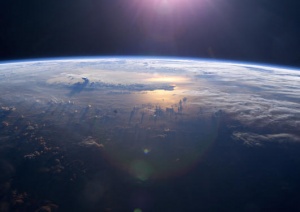
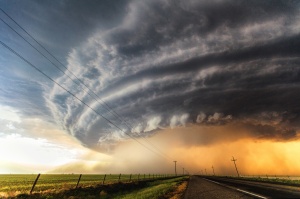
- Earth also named Terra.[25] In the Sol star system, the planet we think we know well and the habitable planet closest to the star that originally facilitated the formation of the original 3 habitable worlds of the system, of which Earth is the only intact surviving world of these 3.
| Keyword Index: |
- Moon (Earth) Latin: Luna, is the Earth's only satellite. Contact 5 explains how its not the planets original satellite, but its second, and is older than the planet itself defeating any of the theories. Though it must be explained that academic theories based on geological finds may still theoretically be applied to Earth's original moon formation which is no longer with us. Many astronomers believed that slightly less than 4,500 million years ago, whilst the Earth was still hot and young, a massive, violent off-centre collision with another large object led to large amounts of material being ejected into the Earth's orbit. This material cooled down and formed what we know as the Moon thousands of years later. According to this hypothesis, the core of this unknown object would have been incorporated into the Earth's mantle, thus changing the Earth's composition which is why it didn't make sense after we realised what the moon actually was.

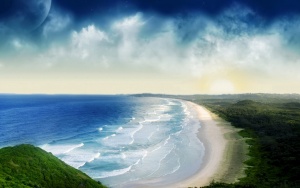
- Malona also called Malon[26], Phaeton[27], Tiamat and Planet V by modern theorists[28], it was called Phaethon with a th, in ancient greek and the most ancient stories and myths that survived and were passed on, some of the stories are mixed into stories about human beings called Phaethon and named after the planet, which of course has nothing to do with a Planet itself, unless there is clearly some cosmic information woven into the story. Metamorphoses by Ovid has several chapters for the ancient stories and myths of Phaeton. Its mentioned by Semjase in contact 4 and yet again in contact 251 where its explained how it was destroyed in the distant past of the Sol star system. Its current existence now constituting smaller and larger pieces forming the asteroid belt.[29][30] Which incidentally will be fully recognised by our distant descendants, probably during the time of frequent trips to and from Earth and future terraformed colonised Mars. But much like today, only a tiny batch of humanity will login to the evaluations. Only when, much later, the full facts of our worlds, our history and all the sciences that never change, are taught in future style schools under a different non-slavery style regime, will standard folk login to these ideas out of their own volition. Until then, it will only be the tiny batch that finds it.
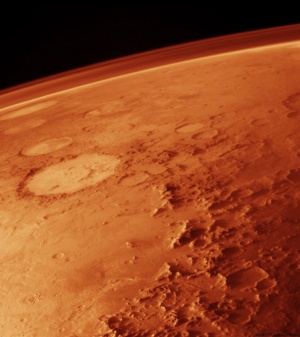
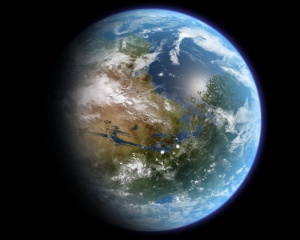
- Mars is now a desolate and uninhabitable planet[31] but it was not always this way. Its explained in contact 251 how "masses of diverse races found refuge on the planets Mars and Malona / Phaeton, where they constructed cities, pyramids, stations and other things (something similar to Earth or something similar in our history, or which can be found on earth if looking at things in their truest sense). They led a good life on Mars until the planet became uninhabitable through cosmic influences. The Destroyer penetrated the Martian orbit and wrenched Mars with it into another SOL orbit, namely that of Malona, where it remained. Subsequently, Malona drifted away, however, because of the Destroyer's powerful forces, but managed to exist in this orbit until the time when it was destroyed by its inhabitants many millennia later, and became the Asteroid Belt. During this "drifting catastrophe", the inhabitants of Malona were decimated from approximately 470 million humans to barely 14 million; however, they were able to recover somewhat and by the time they destroyed their planet, their population had increased again to approximately 52 million.[32] These relics were destined to be discovered by our descendants, but in a more recent contact report,[citation needed] these relics and monuments are said to have been removed, with only the natural formations remaining, due to their use as a base for crime preparations by extraterrestrial renegade criminals against Earth in light of the opportunity, which has now passed incidentally. Mars is additionally described in 251 as being the place of a future war which assumes a great many prerequisite developments for its safe habitation and indeed the passing of many generations before this would even become indeed imaginable as a possibility, in comparison with its current state.
- Asteroid belt is here between Mars and Jupiter in the current time. Its occupied by numerous irregularly shaped bodies called asteroids or minor planets.[33] But only because Malona was manoeuvred into this position by a horrendously powerful repulsion effect before its final destructive sequence of events.[34] Computer simulations suggest that the original asteroid belt may have contained mass equivalent to the Earth. The current asteroid belt is believed to contain only a small fraction of the mass of the primordial belt. Primarily because of gravitational perturbations, most of the material was ejected from the belt believed to be within about a million years of formation,[35] leaving behind less than 0.1% of the original mass, even though we now know its formation was only around 70 or so thousand years ago and was formerly a planet a little larger and a little older than Earth, that held this star systems largest volcano after Olympus Mons on Mars. In 2006 it was announced that a population of comets had been discovered within the asteroid belt beyond the snow line, which may have provided a source of water for Earth's oceans. According to some models, there was insufficient outgassing of water during the Earth's formative period to form the oceans, requiring an external source such as a cometary bombardment.[36][37][38] Which goes some way to explaining where all of Earth's additional water, destined to melt, held up in colossal shelves of ice may have come from.
Outer Planets
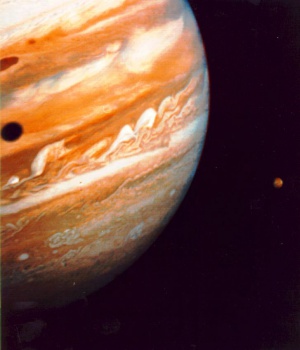
- Jupiter is mentioned in Contact report 39, 115, 182, 228, 251, FIGU Bulletin 4, 5, 6, 7, 8, 9 and 11. Jupiter would be considered a sub-system of Planet-Planets[39] by Plejaren standards of designation. Jupiter or Saturn's atmosphere may be ignited at some distant future time in a prophecy of an experiment that goes wrong. Though its more in character with the earth human that this would be a deliberate and barbaric action, that causes either of these planets to burn in a similarly visible way to a star for around a week, visible from Earth, like a temporary week long second very tiny sun and then to simmer down to be a burned out charred smaller planetary body thereafter.[40]
Jupiters Galilean Planet-Planets
- Source: Contact Report 228 line 98. - Discovered by Galileo Galilei around January 1610.
- Europa (Jupiter)
- Ganymede (Jupiter)[41]
- Callisto (Jupiter)[42]
- Io (Jupiter)[43]
Saturns Planet-Planets
- Source: Contact Report 228 line 98. - Discovered by Christiaan Huygens in 1655.
- Titan (Saturn)
- Kathein is discussed in contact 228, contact 223 and FIGU Bulletin 009 as a planet in the Sol star system but which remains hidden from the perspective of earth due to its orbit residing beyond the sun, behind the sun from our perspective. Travelling at a tremendous velocity having been freed from the Destroyer Planet's field of force during its tenth to last passage through our star system. Its uninhabited and will drift out of the Sol star system in the future (may have already occurred in fact).[citation needed]
- UNI/Nibiru/Nubiru (Transpluto Planet), twelfth planet, is mentioned in FIGU Bulletin 009, FIGU Bulletin 010 and briefly by Quetzal in contact 228. An uncommonly big comet, which has an orbital period around the solar system of around 3,600 years. Its orbit brought it closest to the Sun in March of 1997[44]. The comet is not in a position to bear human life. That which emerges from old texts regarding the Annunaki and the planet Niburu is based on mythological facts as well as beliefs, misguidance and erroneous assumptions. Also see Comets. The assumption at this stage is that its orbit is influenced by Sol's binary star, the Dark Star (As catalogued below).[citation needed]
The Original 12 Planets
There are of course 8 planets by modern definition, we're not even sure there were 12 or more or less. But it becomes twelve if we list them in the way our ancestors might have catalogued them hypothetically
1: Vulcan/Volkano
2: Mercury
3: Venus, Formerly Skill.
4: Earth
5: Malon, Now Asteroid Belt.
6: Mars
7: Jupiter
8: Saturn
9: Uranus
10: Neptune
11: Pluto
12: UNI
Kathein was formerly a Planet-Planet, wrenched from its orbit by the wandering planet as was Venus, as listed under Comets and Meteors and Planetary Transplantation.[citation needed]
Beyond the Oort cloud
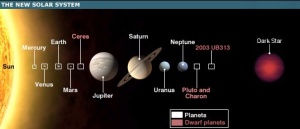
- Dark Star Sols twin star Contact Report 544 10 times smaller (140 thousand km rough diameter) and around 1 light year from the Sol Star the Sun. Making the distance between the two bodies constituting the binary star system, around 9.5 trillion km, 5.9 trillion miles. It rotates with the Sun as a binary formation in space, to form an invisible centre of mass between the two stars, as you might expect, which in turn move together in space, together moving in these much larger orbits around the galaxy. The rotation itself of these two binary stars around this invisible colossal centre of mass, rotates incredibly slowly, making one rotation every 26 million years, which additionally means its an incredibly stable formation. Ptaahs designation as a Dark Star, or perhaps its an Earth designation, could mean either the theoretical, compatible with, Newtonian mechanics 'Dark Star' ie a surface escape velocity equal or greater than light speed, and a critical radius of r ≤ 2M. Or the Dark Matter related 'Dark Star' with a high concentration of neutralino dark matter within it, generating heat via annihilation reactions between dark-matter particles. The heat prevents such stars (possibly such as this 'Dark Star') from collapsing into the relatively compact sizes of more recently created stars and therefore prevent nuclear fusion among the normal matter atoms from being initiated. Or it could simply mean it just does not emit any light, which is basically saying the same thing.[citation needed]
- Nemesis (Dark Star) Billy mentions Nemesis in Contact Report 544 simply in reference to the binary Dark Star. Nemesis is postulated hypothetically to be a red dwarf star or a brown dwarf (relatively cool substeller 4,000 Kelvin star unable to sustain hydrogen-1 fusion in their cores) at around 1.5 light-years distance from the Sun. The interesting thing is that they formulated the idea to explain a cycle of mass extinctions on Earth that appears to occur every 26 million years. An amount of time Ptaah states is the rotational period for our binary stars around its invisible pivotal centre of mass. But because the thing is actually a Dark Star, and therefore cannot be seen with conventional telescopic equipment, a range of new theories have sprung up in explanation of all the facts pointing toward something being there, just beyond the Oort cloud. As a result of the Dark Star entering the Oort cloud as a natural progression of this rotation with the Sun, it has disturbed many of the various objects in the Oort cloud, catapulting objects (like bullets) off in all kinds of directions, a number of these have been directed toward Earth in the inner solar system. Well actually this occurred a very long time ago, what is implied and fully meant in the explanation by Ptaah, is that they are already here now, that there is a line of them and that the Chelyabinsk meteor was one of them.[citation needed]
- The Dark Stars various still undiscovered planets. A star does not require the emission of light to have an arrangement of orbits, as the Dark matter is a separate Force.
| Plejaren Federation | |
Source: Plejaren Federation
[+expand]
- Erra is the home-world of Ptaah, Quetzal, Semjase, Sfath and 550,000,000 others. A world of the Plejaren Federation located in the Tayget, Plejara or Plejares star system. Under the leadership of the Andromedan High Council.
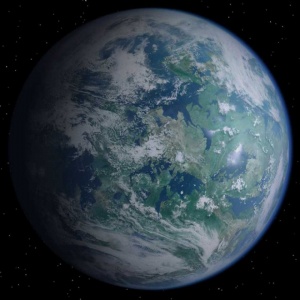
- Askal is another inhabited planet of the Tayget, Plejares or Plejara star system. Sudor of Askal from this world has previously contacted Billy according to the Contact Statistics.
- Luseta is another inhabited planet of the Tayget, Plejares or Plejara star system. Nefratisa is a Lusetan from this world contacted Billy on at least 26th June 2001 according to the Contact Statistics.
- Timar is a planet in the Akon star system in the DAL Universe. Asket and Nera are from this world. The Timmar are 'possibly' members of the Plejaren Federation.
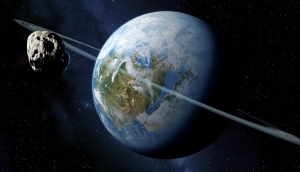
- Deron resides in the Vega star system and they are members of the Plejaren Federation.[citation needed]
- Druan a planet in the Nol star system 3.1 million light-years distance from the SOL system.[45] Where the Druan are said to live. They are also members of the Plejaren Federation. A large 350 metre diameter Druan ship was observed for 45 minutes at the SSSC on the 8th of April, 1983 at 8:15 PM. Forming part of their their 5 to 6 month expedition of Earth in which their ships were seen on every continent of the world.[46]
Florena's Note – 1/08/2004: The Plejarens and the Druans established intensive contact with each other. In the course of two years, negotiations took place over an admission of the Druans into the Plejaren Federation, which found its fulfilment with the integration of the Druans in February, 1985. At the same time, they agreed on the integration of the Druans into the spirit teachings, as this is taught by the Plejarens, because the spirit teachings of the Druans are in conformity with the teachings of the Plejarens, as they are also taught by Billy on Earth. On the 11th of May, 1985, Quetzal, accompanied by a Druan named Zeltan, appeared to Billy and explained to him that the spirit teachings, which Billy prepares for the Plejaren spirit leadership, would also be passed on to the Druans in the future for learning purposes. The Contact with Zeltan remained unique, however. Since that time, the Druans have been working with Billy’s teachings.[47]
- Njsan a planet in the Lyra star system where the Njsan reside and are members of the Plejaren Federation.[citation needed]
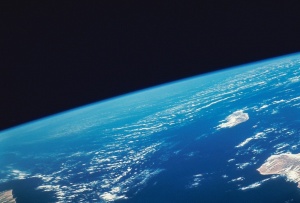
- Sater also in the Lyra star system and members of the Plejaren Federation.

- Bardan 1, 2 and 3. The People's Union of Bardan is located in the Coma Galaxy and are recently new members of the Plejaren Federation. One of their ships self-destructed in Russia, Earth on 30th June 1908, which came to later be known as the Tunguska event.[48][49]
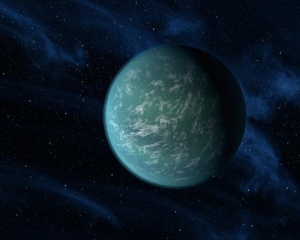
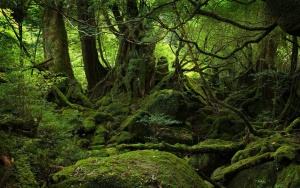
- Deneb is a planet in a star system in what we (Earth) have named the constellation Cygnus (northern cross, swan, associated with the tragic story of Phaethon in Greek myth). Denebians resemble a half-human, half-frog (Amphiboid) humanoid form, with fingers twice the length of an Earth-humans (with no specific data for epidermal organogenesis).[50] Asina whom Billy has met twice is a Denebian according to the contact report statistics. In Evolutionary terms, humanoid represents a consciousness evolution, though the Amphibia classification combines an additional instinct or intelligence based evolutionary process, while it is not explained whether the Denebian additionally has a spirit-energetic evolution. Which however is moderately answered by being essentially half-human (a human spirit-form). In phylogenetic terms, Amphibia class, taxonomic rank/order Anura, in ancient Greek an-, without + oura means tail, there is no evidence that the Denebian Amphiboid form has had a need for a tail during the evolutionary process. Caudata/Urodela is likely ruled out with the little information we have. Likely omnivorous though nothing is spoken in terms of the process of metamorphosis nor leaving the eggs (gelatinous mass) somewhere as part of the reproductive, fertilisation process. Making this the furthest thesis may go with this limited information, while nothing is yet spoken of specific culture (aspirations or ideals). Leading back finally to the planet Deneb itself, whereby specific environmental conditions could be spoken of. Asina and her colleagues were visiting Earth on a scientific mission, possibly exploration, and had damaged their ship. Billy was able to put them in communication with the Plejaren who helped them repair it. On the second occasion in the year 2000, Asina came to thank Billy for his help 23 years prior. The Denebian have gone on to join the Plejaren Federation.[51]
| Other Worlds | |
[+expand]
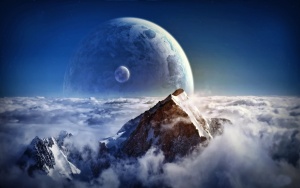
- Sadr is explained in contact 238 as a world in the Waron star system and birthplace of Nokodemion.[citation needed]
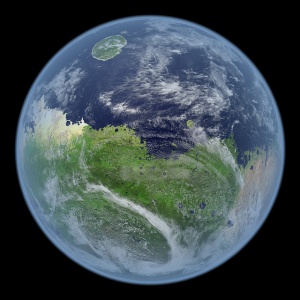

- Desom is in the Asap galaxy and is inhabited by humans at a stage of evolution similar to Earths Middle Ages time period. The star in the system is a giant sun. Desoms moon is four times larger than Earths moon. This moon will rush into the systems giant star in 3200 years time. Billy in the Plejaren Great Spacer visited this planet on 16th September 1975.
- Saban A planet 2.1 million light-years distance from Sol where a splinter group from The Bafath had a base of operations until 1982 when they were arrested by Plejaren forces.
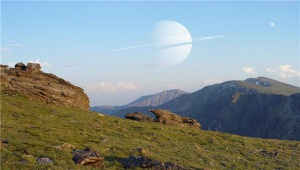
- Kartag A planet in the Neb Star System in the Aratom Galaxy. Visited by Billy and the Plejaren on 16th Sept, 1975. The planet is inhabited by humans at a similar stage of development to that of Earth humans. The inhabitants were destroying one another with nuclear weapons. They use aircraft similar to beamships. The system was under the control at the time of the visit by a highly developed form of life, which intervened to prevent an extra-planetary catastrophe. The inhabitants adhered to the advice and were thus saved from total self-annihilation.[52]
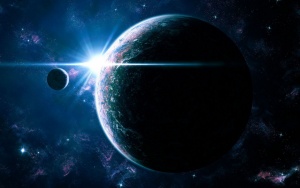
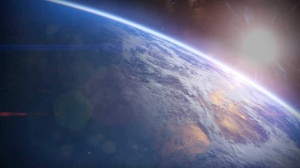
- Kados was located in a distant galaxy known as the Negeren Galaxy. Its an average distance from the SOL system of 6.3 billion light-years. Though it cannot be seen from Earth because a dark cloud (respectively a dark matter/material cloud) is located at a distance of 5.2 billion light-years away from Earth acting as a shield which absorbs the light of the Negeren galaxy. The original Lyrans came from Kados before they went on to settle other planets and galaxies before then finally settling the areas of Lyra and Vega 26 million years ago. Which is then where they finally gained the name 'Original Lyrans'. The star system in which Kados was located was changing into a supernova which eventually engulfed the planet. It was these changes occurring at the time which were the culminating and resulting factors that lead to the migration to these other systems for the original Lyran people. However the planet in the Lyra systems has since also been destroyed, which is why they migrated yet again. These Lyra planets were located beyond the space-time plane that Earth is in at this time, and therefore are not discussed in any more detail since there is no longer relevance for use to us now and in this time.[53]
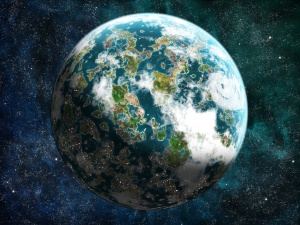
- Nissan is in the neighbourhood of Lasan in the Lyra star system. The Chinese and Japanese races on Earth emigrated to this star system 2,400,000 years ago. 25,978 years ago they again emigrated from planet Nissan to Earth, consequently making them the youngest immigrants to Earth of today.[54][55] With the exception of the people from The People's Union of Bardan who got mixed up in the events which later became known as the Tunguska event, though these peoples did not intend/plan to stay in the same way that the peoples of Nissan intended.[citation needed]
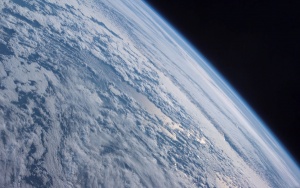
- Kudra in the Nisan star system. Is where The Chinese and Japanese races of Earth were originally created (Assuming the word 'originally' means the planet in which the first steps of evolution were taken) before they emigrated 2,400,000 years ago to planet Nissan [Above].[56] Though elsewhere it says we all 'originated' in the Ur (most ancient) sense, together (with the exception of the native Earth and SOL human, Neanderthal), along with what is now the Plejaren, having settled various diverse worlds in the interim, in this way having met back up again here on Earth in the current time, having developed slightly different features in this interim which, by way of logic, makes us collectively unsuitable for association with Earths specific environmental conditions for evolution, according to the unchangeable natural laws which can be observed for this specific planet, Earth, including its specific gravitational influence, climatic conditions and air composition.[citation needed]
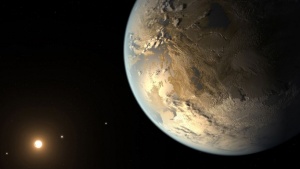
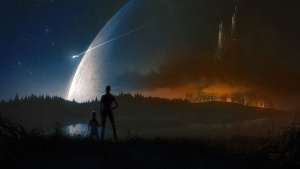
- Akart is discussed in contact 35 and later in Contact_Report_476 and contact 481. It was a planet 5 light-years distance from Earth that was inhabited by over 23,000,000,000 humans, and is about the same size as Earth to give some idea of the conditions that had evolved there under this excessive overpopulation, comparatively with present day Earth. They were capable of space travel and visited Earth often to collect fruits, grains and vegetables via a mid-way space station that facilitated this greater distance of space traversal, their technology not as yet capable of a much quicker economical method of moving over these tremendous distances. So that they could set out and grow some of the things we have on earth on their world. Atleast, this was the case until the planet suffered an 'oxygen collapse' or 'atmospheric collapse' as explained in contact 481, whereby the excessively overpopulated, therefore mismanaged, world developed a CO2 concentration which caused a widespread destruction of life. Continuation of life on Akart therefore has been severely impaired and the scale of the disaster has been unprecedented in terms of their continued evolution on the world, as you can imagine, Carbon Dioxide being a substance that is deadly to human beings in such concentrations. Also see Climate Change and the exacerbation of such a scenario with the clearing of rainforests and massive widespread use of the combustion engine on Earth for a comparison of culminating factors. An exceptional note here that Earth need never get anywhere near 23 billion humans for a similar oxygen collapse of the atmosphere to occur on Earth, with these particular factors.[citation needed]
| Comets and Meteors | |
Source: Comets
[+expand]
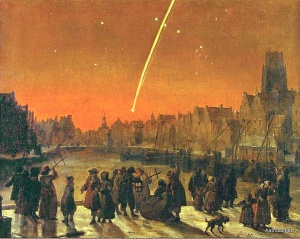
- Destroyer planet/comet last flew past in 1680 making it "The Great Comet of 1680", the first comet discovered by telescope.[57] Its been the cause of many problems in the Sol star system over a long period of time, but has now been removed by the Plejaren (Also see Comets). The wandering Planet, or Comet by definition, has disturbed at least; Venus, Earth, Mars, Malona, Uranus, Neptune, at one time or another. Contact Report 150 states its volume to be 1.72 times that of the Earth though its weight has been reduced to an average mass of that of the Earth. It rotated at a velocity of 314.7 m/s at the equator compared to the Earth's 465 m/s.[citation needed]
- Red Meteor has been in discussion on and off for many decades, as being on an absolute collision course with Earth if its course is not disturbed, designated '99942 Apophis' in 2004. Discussed yet again in Contact Report 544, as being part of a long line of similar meteors that is going to cross Earths orbit around the Sun for decades to come. See the Beyond the Oort Cloud section and the Dark Star for more of an explanation in summary of Contact Report 544, or just read the whole contact, and search Red Meteor on theyfly.com for Michael Horns articles on the Red Meteor.[citation needed]
Life
Extract from Contact Report 224 [show/hide]
| English | German |
| Billy: | Billy: |
| ...I would now just like to speak on Mars as well as on the most diverse moons and planets in our SOL system: as I was enlightened by you and was also allowed to determine on the spot with your assistance, other than on Earth, no life forms of a human nature exist on any other SOL planets or their moons. And now, in order to make it clear that it always only concerned human life forms when you spoke of the fact that there is no life in the SOL system except on our planet, I would just like to hear officially a brief explanation on your part. | Gut, dann möchte ich jetzt erst zum Mars kommen sowie zu den verschiedensten Monden und Planeten in unserem SOL-System: Wie ich von euch aufgeklärt wurde und mit eurer Hilfe selbst auch an Ort und Stelle feststellen durfte, existieren ausser auf der Erde auf keinen anderen SOL-Planeten oder deren Monden irgendwelche Lebensformen menschlicher Natur. Und um nun einmal klarzustellen, dass es sich immer nur um menschliche Lebensformen handelte, wenn ihr davon gesprochen habt, dass es ausser auf unserem Planeten kein Leben im SOL-System gebe, möchte ich einmal offiziell eine kurze Erklärung deinerseits hören. |
| Quetzal: | Quetzal: |
| 3. What you say is correct; on our part, we always only spoke of the fact that other than on Earth, no human life forms exist in the SOL system on other planets and on their moons, and indeed, even if we have only used the term “life forms” alone. | 3. Was du sagst, ist von Richtigkeit; unsererseits sprachen wir immer nur davon, dass im SOL-System auf anderen Planeten und auf deren Monden ausser auf der Erde keinerlei menschliche Lebensformen existieren, und zwar auch dann, wenn wir nur den Begriff Lebensformen allein verwandt haben. |
| 4. But always excluded were those human life forms that, for your understanding, we designate as SOL system foreigners or SOL system externals and who look around on SOL planets and their moons solely for expeditionary purposes. | 4. Ausgeschlossen waren dabei aber stets jene menschlichen Lebensformen, die wir nach deinem Verstehen als SOL-System-Fremde oder SOL-System-Externe bezeichnen und die sich nur expeditionsmässig auf SOL-Planeten und deren Monden umtun. |
| Billy: | Billy: |
| That is, thus, clear and also means that you’ve never spoken of microorganisms, which are present on virtually all planets and on certain large moons, as you let me see through your apparatuses. In part, these microorganisms exist on the surface materials of the planets and moons, while others find their habitats in the ice or under this in the under-ice seas and under-ice lakes, as you’ve designated the whole thing. And all of these microorganisms, according to your explanations, have developed in their masses on the relevant planets and moons themselves, although their origin lay elsewhere, namely with comets and wandering planets, which deposited parts or entireties of their microorganisms on the planets and moons, depending on whether these came into the tails of the cosmic wanderers or whether these or parts of these fell from them. As a rule, comets and meteors are carriers of microorganisms that, if they “inseminate” planets and moons, immensely multiply in conditions that are favorable for them and gradually change themselves and mutate or, in the course of their secretions, create new substances and new forms, which form new life in unions, etc. with other forms, from which higher life develops over the course of hundreds of thousands and millions of years, if the necessary conditions are given on the planets and moons, so particularly climate, temperature, and food. Thus, there is life that is only in the light and other life that can only live in total darkness, while others can only exist in intense heat or cold. Others can only exist in water, in gases, in soft or hard matter, while others can only live in external spheres, etc. And as it happens universe-wide with the “insemination” of the planets and moons by comets, wandering planets, and meteors, as well as by clouds of microorganisms, which drift through space, so it has also happened on our Earth. First through this was it possible that life could develop from the planet itself. So if it is said that the Earth created life from itself, then this is to be understood in the sense that first, it became “inseminated” by microorganisms from outer space, precisely through comets, wandering planets, meteors, and clouds of microorganisms, etc., which then multiplied on our planet when conditions that were life-favorable for them were created by this. Primarily included in these favorable conditions was volcanism, in which thermal microorganisms romped about, from whose effects, however, also climatic and atmospheric forms and layers, etc. developed, and after this developed lichens and mosses and later higher plants and after that the animal forms, and at last, humans were able to develop. Mainland life emerged here in the sandy shore layers of the seas and other waters, but this earthly original form of life first developed in the primeval waters, which still would have been undrinkable and deadly for humans and for actual animals. This process of the origin of life on Earth is likewise given throughout the whole Universe, so thus, there are micro-organic as well as low and higher and even high life forms elsewhere on other worlds – and with these also humans, as your existence probably proves sufficiently, and indeed, even against all the nonsensical assertions of know-it-alls and other lunatics, who believe that higher life or any life at all would only exist on our Earth. | Das ist also klar und sagt auch aus, dass ihr nie von Mikroorganismen gesprochen habt, die praktisch auf allen Planeten und auf speziellen grossen Monden vorhanden sind, wie ihr mich durch eure Apparaturen habt schauen lassen. Teils existieren diese Mikroorganismen auf den Oberflächenmaterialien der Planeten und Monde, während andere wiederum ihren Lebensraum im Eis finden oder unter diesem in den Untereismeeren und Untereisseen, wie ihr das Ganze bezeichnet habt. Und all diese Mikroorganismen, so eure Erklärungen, haben sich in ihrer Masse auf den betreffenden Planeten und Monden selbst entwickelt, wobei jedoch deren Ursprung anderswo lag, und zwar bei Kometen und Wanderplaneten, die Teile oder Ganzheiten ihrer Mikroorganismen auf den Planeten und Monden ablagerten, je nachdem, ob diese in die Schweife der Weltraumwanderer gerieten oder ob diese oder Teile von diesen abstürzten. Kometen und Meteore sind in der Regel Mikroorganismenträger, die, wenn sie Planeten und Monde ‹besamen›, sich bei für sie günstigen Verhältnissen ungeheuer vermehren und nach und nach sich wandeln und mutieren oder im Gang ihrer Absonderungen neue Stoffe und neue Formen schaffen, die in Zusammenschlüssen usw. mit anderen Formen neues Leben bilden, aus dem sich im Laufe von Jahrhunderttausenden und Jahrmillionen höheres Leben entwickelt, wenn die notwendigen Voraussetzungen auf den Planeten und Monden gegeben sind, also Klima, Temperatur und Nahrung im speziellen. So gibt es Leben, das nur im Licht, und anderes, das nur in völliger Dunkelheit leben kann, während anderes wiederum nur in ungeheurer Hitze oder Kälte zu existieren vermag. Anderes kann nur im Wasser, in Gasen, in weicher oder harter Materie existieren, während wiederum andere nur in äusseren Sphären leben können usw. Und wie das universumweit mit der ‹Besamung› der Planeten und Monde durch Kometen, Wanderplaneten und Meteore sowie auch durch Mikroorganismen-Wolken geschieht, die durch den Weltenraum treiben, ist das auch auf unserer Erde geschehen. Erst dadurch wurde es möglich, dass sich aus dem Planeten selbst heraus das Leben zu entwickeln vermochte. Wenn es also heisst, dass die Erde aus sich selbst heraus das Leben geschaffen hat, dann ist das in der Weise zu verstehen, dass sie erstlich durch Mikroorganismen aus dem Weltenraum ‹besamt› wurde, eben durch Kometen, Wanderplaneten, Meteore und Mikroorganismen-Wolken usw., die sich dann auf unserem Planeten vermehrten, als durch diesen die für sie lebensgünstigen Verhältnisse geschaffen wurden. Zu diesen günstigen Verhältnissen gehörte in erster Linie der Vulkanismus, in dem sich Thermo-Mikroorganismen tummelten, aus dessen Wirkungen jedoch auch klimatische und atmosphärische Formen und Schichten usw. entstanden, wonach sich dann Flechten- und Moosleben und später höhere Pflanzen und danach die animalischen Formen und letztendlich der Mensch zu entwickeln vermochten. Das Festlandleben entstand dabei in den Sandufer-Schichten der Meere und sonstigen Gewässer, wobei dieses irdische Urformleben sich jedoch erstlich im Urwasser entwickelte, das für den Menschen und für eigentliche Tiere noch nicht trinkbar und tödlich gewesen wäre. Dieser Vorgang der Lebensentstehung auf der Erde ist gleichermassen im gesamten Universum gegeben, folglich also auch anderswo auf fremden Welten mikroorganisches wie auch niederes und höheres und gar hohes Leben existiert – und damit also auch Menschen, wie eure Existenz wohl zur Genüge beweist, und zwar auch gegen alle unsinnigen Behauptungen von Besserwissern und sonstigen Irren, die glauben, dass allein auf unserer Erde höheres oder überhaupt Leben existiere. |
| Quetzal: | Quetzal: |
| 5. I have nothing else to say to that, for your remarks correspond to the reality. | 5. Dazu habe ich nichts weiter zu sagen, denn deine Ausführungen entsprechen der Realität. |
| 6. It would just be important to explain the actual, original source of all life and all matter when it falls into your knowledge. | 6. Wichtig wäre nur noch der eigentliche Ursprung allen Lebens und aller Materie zu erklären, wenn das in dein Wissen fällt. |
| 7. It can, indeed, be assumed that you will also have this conversation be transmitted later and will publish it for the instruction of the Earth-humans. | 7. Es ist ja anzunehmen, dass du auch dieses Gespräch später übermittelt haben und es zur Belehrung der Erdenmenschen veröffentlichen willst. |
Extract from FIGU Special Bulletin 032 [show/hide]
| English | German |
| Billy | Billy |
| Reader's question | Leserfrage |
| If it is said that the human did not descend from the apes, how was it then, really? | Wenn gesagt wird, dass der Mensch nicht vom Affen abstamme, wie war es dann wirklich? |
| Mariann Uehlinger Mondria, Switzerland | Mariann Uehlinger Mondria, Schweiz |
| Answer | Antwort |
| Excerpt from conversations in the kitchen of August 27th, 2006 | Auszug aus Küchengegspräch vom 27. August 2006 |
| The original lineage of the primates - the coming into being of humans and apes | Urlinie der Primaten - Werden von Mensch und Affe |
| Originally the ape-beings and the humans descended from one single primal lineage, which, as a physically billowing form, respectively, a composition, formed as a primary state and was enlivened by an impulse-energy spirit-form, as that which is characteristic of plants. | Ursprünglich entstammen die Affenwesen und die Menschen einer einzigen Urlinie, die als physisch-wabernde Form resp. als Beschaffenheit resp. als primärer Zustand geartet und von einer Impulsenergie-Geistform belebt war, wie das den Pflanzen eigen ist. |
| This impulse-energy spirit-form is, respectively was, originally like a primal lineage from which the primates came forth, because it - in this physically billowing essence, respectively, in this first essence which was neither animal nor human, rather just a slimy, billowing, plant-like mass - still could not beget, respectively give birth to, an instinctive, or aware, consciously evolving spirit-form. | Diese Impulsenergie-Geistform ist resp. war erstlich als Urlinie der daraus hervorgegangenen Primaten gegeben, weil sich in dieses physisch-wabernde Wesen resp. in dieses Erstwesen, das weder Tier, Getier noch Mensch, sondern eben eine schleimartige, wabernde, pflanzengleiche Masse war, noch keine instinktmässige oder bewusst bewusstseinsmässig evolutionierende Geistform einzeugen resp. eingebären konnte. |
| Only when this kind of entity was sufficiently broadly and highly developed into the primate, so that it had an actual brain at its disposal, was it capable of taking up, in its now developed brain, a primal combination of an aware evolution-consciousness and an instinct-consciousness. | Erst als das diesartige Wesen weit und hoch genug zum Primaten entwickelt war, dass es über ein eigentliches Gehirn verfügte, wurde es fähig, eine Urkombination eines bewussten Evolutionsbewusstseins und eines Instinktbewusstseins im nunmehr entwickelten Gehirn aufzunehmen. |
| With this combination of evolution-consciousness and instinct-consciousness - emerging, through evolution, out of the primal form of the impulse-consciousness - it dealt with an ambiguous spirit-form, out of which emerged two new spirit-forms, and therefore two new lineages and developments, and indeed a hominid, out of which came about an aware consciousness and therefore the conscious consciousness of the human, capable of evolution, as a result of the block [ie: mass/volume] of collective consciousness, whereby, however, in certain contexts, the forms of instinct-consciousness and impulse-consciousness were maintained. | Bei dieser Kombination Evolutionsbewusstsein und Instinktbewusstsein handelte es sich - evolutionierend hervorgehend aus der Urform des Impulsbewusstseins - um eine Zwitter-Geistform, aus der zwei neue Geistformen und also zwei neue Linien und Entwicklungen hervorgingen, und zwar eine hominide, aus der durch den Gesamtbewusstseinblock ein bewusstes Bewusstsein und also das bewusst evolutionsfähige Bewusstsein des Menschen entstand, wobei jedoch in gewissem Rahmen die Formen des Instinktbewusstseins und des Impulsbewusstseins beibehalten wurden. |
| In regard to the other spirit-forms, these developed as pure instinct-spirit-form, with an unconscious, and therefore not conscious, evolution-capable instinct-consciousness, as in the apes, whereby, likewise, a part of the impulse-consciousness was maintained. | Im Bezug auf die andere Geistform bildete sich diese als reine Instinktgeistform heraus, mit einem unbewussten und also nicht bewusst evolutionsfähigen Instinktbewusstsein, eben das des Affen, wobei ebenfalls ein Teil des Impulsbewusstseins beibehalten wurde. |
| And if it is now taught: "... Originally, indeed the apes and the humans descended from one primal lineage, from which emerged the primates. | Und wenn nun gelehrt wird: "... Ursprünglich entstammen ja die Affen und die Menschen einer Urlinie, aus der die Primaten hervorgingen. |
| ... Already early, however, a pronounced evolutionary separation succeeded, whereby only one single species retained its three forms of consciousness, and these, through evolution, made a single union of consciousness, out of which the human species came into being." | ... Schon früh jedoch erfolgte eine starke evolutive Trennung, wodurch nur eine einzige Gattung ihre drei Bewusstseinsformen behielt und diese evolutiv zu einem einzigen Bewusstseinsverbund machte, woraus die Gattung <Human> resp. Mensch entstand." |
| ... And finally, yet to explain, is that on all the worlds in the universe which bear higher and high life, the evolutionary path to humans - respectively becoming human through evolution - is the same. Consequently, primate beings, respectively primary beings, come into being everywhere; out of which, on one hand, through further evolution, the human species develops, while the remaining primary-beings succumb to a degeneration of the form of consciousness, and thus remain primates, respectively, become ape-beings, as they are called by Earth-humans.", then the following is to be understood: | ... Und letztlich ist noch zu erklären, dass auf allen Welten im Universum, die höheres und hohes Leben tragen, der Evolutionsgang zum Menschen resp. die Menschwerdung durch die Evolution gleichermassen ist, folglich überall Primatenwesen resp. Erstwesen entstehen, aus denen sich einerseits in weiterer Evolution die Gattung Mensch entwickelt, während die restlichen Erstwesen einer Degeneration der Bewusstseinsform anheimfallen und also Primaten bleiben resp. zu Affenwesen werden, wie sie von Erdenmenschen genannt werden., dann ist das folgendermassen zu verstehen: |
| ... In the origins of the development of the primate beings, these were formed in such a way in their form of consciousness, that their consciousness was aligned with an aware evolution-consciousness, as well as with a form of instinct-consciousness and an impulse-consciousness. | ... In den Ursprüngen der Entwicklung der Primatenwesen waren diese in ihrer Bewusstseinsform derweise geartet, dass ihr Bewusstsein sowohl auf ein bewusstes Evolutionsbewusstsein wie auch auf eine Form eines Instinktbewusstseins und eines Impulsbewusstseins ausgerichtet waren. |
| The human sprit-form is, after the shift out of the one primal lineage, in a state of being a primate, and therefore a form, in its first body-type origin, which can develop positively as well as negatively, if that is told as an allegory in respect of the unconscious instinct-consciousness of the ape beings and the animals in the sense of negative, as well as in respect of the conscious and aware evolutionary consciousness of the human in the sense of positive. | Die Geistform des Menschen ist nach dem Wandel aus der einen Urlinie in einem Zustand des Primatenwesens und so in ihrem erstlichen körpermässigen Ursprung eine Form, die sich sowohl positiv als auch negativ entwickeln kann, wenn das als Gleichnis gesagt wird in bezug auf das unbewusste Instinktbewusstsein der Affenwesen, der Tiere und des Getiers im Sinn des Negativen sowie hinsichtlich des bewussten und bewusst evolutiven Bewusstseins des Menschen im Sinn des Positiven. |
| Principally, with the initial coming into being of every spirit-form, it emerges from an evolutionary shift of an unconscious impulse-consciousness, respectively, out of a impulse-spirit-form capable of shifting higher and it develops, in an ambiguous stage, initially towards an essentially conscious human or unconscious animalistic spirit-form, as in the allegory with the material forms of life, which, in the initial stage of conception, respectively, procreation, and the coming into being, exhibits a neutral form, and only through further development does it develop towards positive, respectively masculine, as well as towards negative, respectively feminine. | Grundsätzlich ist es beim Erstwerden jeder Geistform gegeben, dass sie aus einer evolutiven Wandlung eines unbewussten Impulsbewusstseins resp. aus einer zum Höheren wandlungsfähigen Impulsgeistform hervorgeht und sich im Zwitter-Stadium erst zur eigentlichen bewussten menschlichen oder unbewussten animalischen Geistform entwickelt, wie das im Gleichnis bei den materiellen Lebensformen ist, die im Erststadium bei der Konzeption resp. Zeugung resp. Empfängnis und Werdung eine neutrale Form aufweisen und sich erst durch die weitere Entwicklung zum Positiven resp. Männlichen sowie zum Negativen resp. Weiblichen entwickeln. |
Rayleigh Scattering
Theoretically Billy has talked about green atmosphere somewhere.[citation needed]
Planetary Evolution
[show/hide]
Human Life Prerequisites, which answers Planetary Evolution
The universe is only very thinly populated with naturally developing human life, therefore, with beings of a Consciousness Evolution, though it is said that under certain special conditions therefore in certain special time-shifted universe dimensions, like that which the Plejares is in, have a configuration more congruent with more, much more, naturally developing human life.
The table in Chapter 1 or on the Evolution page. Illustrates the 7 various forms of evolution.
It is required that before human life can begin to develop, naturally, as a naturally occurring development process, related to cause-effect evolution, causality. That the following forms of life exist on a planet, which is to say, the planet must be suitable for these forms first and is also to say, that humans will not emerge under conditions where logically they could not proceed successfully, to reiterate, to successfully fulfil a Consciousness Evolution.[citation needed]
1: sand, stones, crystals, gasses, liquids, etc. energy evolution Transformation evolution, respectively, conversion evolution. Most commonly, planets in all universes get this far
2: bacterium, bacillus, virus. micro-evolution Compatibility evolution and mutation evolution. These planets are slightly more common.
3: plant life-forms. impulse evolution Adaptation evolution, respectively, assimilation evolution. A fair number of planets develop this life.
4: Life-forms of animals and other creatures. Instinct Evolution. Slightly less develop animals.
5: higher species of animals, such as apes, dolphins, horses, ravens, pigs, goats, parrots, buffalo and other kinds of cattle, bears, camels, donkeys, beasts of prey, elephants, dogs, cats, sheep, and so forth. Intelligence Evolution (not to be equated with the human beings’ consciousness-evolution). These planets are much less common.
6: human life-form Only the human being evolves by means of the conscious evolution of the consciousness. conscious evolution of the consciousness. Planets with human forms can be considered rare.
7: spirit-energetical evolution of Creation. Creation evolution. See Supernatural page. And planets with the highest or upper shelf of ideas, and spiritually developed human beings, constitute an ever rarer occurrence. Though they do tend to last much longer than and tend to find, seek better conditions to fulfill their evolution.
Which is to say in another way, that the two separate layers of humanity on Earth in particular, Earth as a specific example, would not occur in any normal evolutionary situation, by way of the natural laws that cannot be changed and will not change. Which can, needless to say, be incredibly confusing to understand, especially as Earth-humans live such short lives, and keep having to restart their civilization in the Sol Star System.[citation needed]
In case anyone missed it, Earth contains all of the above, as did (in the past) Mars and Malona. But with a lesser developed spirit energetic evolution, which is why earth has been allowed to run wild for many millenia, as a way of facilitating its cultivation as a higher evolved world. But Earth was not the original planet settled in the Sol Star System, it is not the premium planet in the system, Malona was. Which is why, after the absolute tragedy of its destruction, humanity on earth, must be left to cultivate everything for themselves, as degenerated extraterrestrials, as a way of creating, generating stability. It is not a planet that would ordinarily be settled by an advanced civilization, but was settled long ago for that very reason, as the least obvious place to be settled, so that we could evade a group of humans that meant us harm. But the entire experience has caused us harm, and we would have been better off finding a way of jumping into another dimension. But the intergalactic community was forbidden from helping us, due to a series of intergalactic legislations which prohibit such interactions with developing civilizations.[citation needed]
Planetary Expansion Processes connection with its Star and the Dark Matter Force
During the official 251st contact report profound ideas conversation between Billy and Ptaah dated the 3rd of February, 1995. Billy recites a 23 page pre-prepared text "The story of Enoch (Henok in German) or Nokodemion respectively. Where at an specified future time it would be inevitable that as a consequence of Consciousness Evolution the realisation would eventually dawn upon the Earth scientists that the planet is imperceptibly expanding internally.[citation needed]
Regarding the Earth itself, a fact not mentioned in the predictions is that, all along, the scientists were unaware that this planet was not expanding over the millennia through the accumulation of falling star dust and meteors, etc., but that, imperceptibly, it has been expanding internally. This means that an imperceptible expansion process is ongoing for millennia whereby, slowly but surely, the Earth's internal riches are transported to the surface. Over time, this expansion process will accelerate in correlation with the Sun's decreasing nuclear fusion rate through which all gravity fields within this entire solar system will change, in particular those of all the planets.
Whereby we might note that the discovery appears to be connected with a futurological discovery and unveiling of some more of the secrets of the Dark Material Force. At which point we may even be able to firmly, with clarity, correlate a relationship between a stars activity and the planets that orbit it, its planets, rate of expansion, earthquakes and climatic changes even specific weather systems based on its stars activity, without even looking at the planet itself. Even to produce accurate models of the stages of a planets evolution based on a distant stars twinkling frequency. To lead to more accurate ideas of those stars which are more likely to have developed life of their own natural course, based on what we discover from our own star, at this future time, as and when the cognitions grow strong enough to place these ideas side by side, after learning more firmly of Dark Matter.[citation needed]
Planetary Expansion Reiteration
During the 365th contact report conversation between Billy and Ptaah. Ptaah explains a very similar thing in the following way.
So far nothing in the predictions was mentioned about the Earth itself, and the fact that its previously remained hidden from scientists, that the planet, for thousands of years has not only increased in size through falling star dust and meteors etc. But that its imperceptibly expanded from within. Which means that for thousands of years its had a barely noticeable bloating type process occurring in the background, through which the inner treasures of the planet have slowly but surely made into the surface.
FIGU Special Bulletin 80 - The Earth Grows Article.
Sol's Waning, Dying Star
Regarding the relationship a planet has with its star and a future discovery that our star is waning, dying, the following extract can also be found in the same 251st contact report conversation, 3rd February, 1995.
The benefactors knew even then that the people shipped there (Earth) could not remain in this solar system forever but that sometime later they would have to depart for other destinations. The benefactors were fully aware that this remote system's sun was a waning star even then, and it was specifically selected since the Sirius Intelligences and the "Creator Overlords" who were willing to kill the refugees, did not suspect that this region with its dying sun would be a candidate for new settlements of the "degenerates" and "god's workers", as they were called by the "Creator Overlords".
Which may seem off topic from Planetary Evolution, but at some stage people reading heavily into Earth, Planetary Evolution, our history and future, ask the question variants, "so why have we evolved so rapidly on a planet with a dying sun? Dangerous conditions which leaves only a small window for evolution to occur? affixed with -based on the principles of Consciousness Evolution. Who would place themselves in such a situation, type questions.[citation needed]
To avoid these questions being lazily answered, wait until the question properly presses you for a definitive answer, so that cheap conclusions may be avoided.[citation needed]
Planet Transplantation
Similar to Planetary migration[58], where in the nebular hypothesis[59] Uranus and Neptune exist in a region where the reduced density of the solar nebula and longer orbital times render their formation highly implausible. The two instead being thought to have formed in orbits nearer Jupiter and Saturn, where more material was available, and then to have migrated outward to their current positions over hundreds of millions of years. Planetary Transplantation is where a planet migrates through the force of a wandering planet that is in no particular stable orbit, rogue planet.[60] An incredibly rare situation where for whatever reason the planet is itself released from its orbit, its passing force, Newtons laws of motion.[61][citation needed]
During the Contact Report 5 conversation between Semjase and Billy on 16th February, 1975. Semjase explains that Venus was caused by a very rare occurrence, having been dragged into its current position in our star system by a Destroyer planet/comet.
48. Through this comet an event occurred which is very rare in the Universe, namely a planet transplantation:
49. Through the enormous power of this gigantic comet, on a planetary system very far from the SOL system, a planet on the first stages of developing life was thrown out of its orbit and sent out into space, on a parallel trajectory to the destructive giant comet.
50. For over 130 years this planet followed far behind the giant, only infinitely slowly deviating from this path.
51. Then, 3453 years ago, the Destroyer came into the Earth's solar system, and through its gigantic forces it forced the planetary orbits into disarray.
52. As it passed by the Earth, it wrapped it in its huge tail and shook it very hard.
53. Huge storms and volcanic eruptions were the result.
54. People and animals died in large masses, mountains were moved and the ocean depths changed.
55. On the Mediterranean sea, the magma walls of the Santorini volcano were torn down low and large quantities of water entered it.
56. This caused a huge disaster, because the volcano exploded as a result and destroyed the island.
57. The explosion produced a gigantic storm surge which grew to 2000 meters up in the sky, and swept across the sea like a primeval monster.
58. Everything was killed and crushed by it, and the water turned blood red.
59. In Egypt, this storm surge flooded vast areas and gave rise to all sorts of plagues, while the flood wave returned and raced northeastward across the sea, to the eastern shore of the sea in present-day Syria, to destroy wide areas and every port city.
60. The comet still shot through the Earth's solar system, round the sun and back into space, to return 575,5 years later.
61. The planet which, carried along, had slowly been following in its wake, and which had approximately the same size as the Earth, passed by it at a distance of around 600,000 kilometers, and was captured by the attraction of the sun.
62. Due to its gigantic force it forced the new planet into an orbit between its nearest satellites, namely between Mercury and Earth.
63. And since then, this "transplanted" and "foreign" planet has been known to the Earth-humans, who call it Venus.[62]
FIGU Forum Planet Related Questions Answered by Billy
[show/hide]
Animals on other Planets
From the FIGU Forum (Questions Answered by Billy):
Matt - Posted on Monday, December 25, 2006 - 02:17 am
Hello Billy,
1) Can you tell us about the animals found on Erra that are the same as on Earth, and about those that are not?
2) Can you also tell us about the size of the biggest Dinosaur or Animal that the Plejaren know of, that is found on any particular planet out there?
Thank you.
Answer:
1) Yes, he can. There are cows, dogs, cats, camels, etc. etc. which they imported from Earth, and there are thousands of animals unknown to us.
2) No, he cannot.
Arahat Athersata relationship with individual Planets
From the FIGU Forum (Questions Answered by Billy):
Rarena - Posted on Tuesday, July 04, 2006 - 09:13 am
Dear Billy, Thank you for coming back for us...
My question concerns Arahat Athersata. My understanding is that when we reach a certain level of consciousness we integrate with Arahat Athersata and essentially become immortal since we no longer "incarnate" and need to die to continue the "meat" (coarse-matter body) cycle. A good friend mentioned he feels it is his last life on Earth, hence this question.
Are there many people on Earth now, who will evolve to Arahat Athersata within their "lifetime" or do we have to grow and evolve for many more years and develop longer life spans such as the Plejarens?
Answer:
Between our existence here on Earth (or on some other planet) and the existence as a part of the Arahat Athersata level, there will be the existence as a half-material, half-spiritual entity (as it is the case with the High Council). While the existence as a human being with a coarse-matter body lasts about 50 to 80 million years, the next (transition) state lasts for 40 to 60 billion/milliard years.
(Note by CF: Your good friend is quite a distance away from his last life on Earth, meaning before entering the level of AA. In light of the fact that a personality only exists once, he may be correct, though; but I doubt that he meant his statement in this way.)
Planetary positions (radiation, vibrations), influences on our lifelong development
From the FIGU Forum (Questions Answered by Billy):
Smukhuti - Posted March 2011
Dear Billy,
Can you tell us how the positioning of various planets and the sun (stars), during our time of birth and early development, has an effect on the characteristics, inclinations, tendencies we develop. And also how the planetary positions continue to influence, interact with us throughout our lifetime?
Answer:
The radiation (vibrations) of our galaxy's central sun is constantly influenced by the position of the SOL system's planets. Those vibrations may trigger "things" in our consciousness in a neutral way. What is made of those impulses is determined by the individual human being.
An example: If the impulses at the point of birth are favourable (indicating) for becoming a doctor (of medicine), the process towards reaching that goal (and the decision for it) must be gone (made) by the individual person himself. You cannot just sit and wait for the inclinations to become a reality. As everything in life you have to work actively towards it.
In short: The vibrations coming from our galaxy's central sun are neutral possibilities.
Birthdays and planetary cosmic radiation
From the FIGU Forum (Questions Answered by Billy):
Claes - Posted on Tuesday, July 29, 2003 - 06:04 pm
Hello Billy, Thankyou for everything.
It seems to me like you have often had contacts on your birthday. Is there some special reason for this? Are we some how more perceptive or clearer in our consciousness around our birthdate, because of the influence of the planets, stars , cosmic radiation?
Salome, // Claes
ANSWER:
This is a symbolic gesture/action only. A person's birthday has no special meaning or effect or influence, and certainly nothing to do with cosmic radiation. The Plejarans don't celebrate their birthday, with the exception of their 1,000st (but surely not by singing anything like "happy birthday to you ...").
Black holes, their purpose and function in the universe
From the FIGU Forum (Questions Answered by Billy):
Solar - Posted on Wednesday, December 14, 2005 - 12:30 am
Hi Billy .
Could you please explain, what is the purpose and functions of black holes in the universe?
Thank you
Solar
Answer:
They are there for "universal recycling". Black holes are the beginning and end of galaxies, suns, planets, etc. They are an important factor in the cycle of becoming, growing and passing away.
Further Reading
- Planetary Oxygen Collapse
- Climate Change
- Humanoid lifeforms in the known universe
- Hostile Alien Lifeforms
- How did our universe and our world come into existence
- Beamships
- Dimensions
- Time Travel
- Space Travel
- Time Gate
- Space-time configuration
- Fundamental Forces
- Planets
References
[show/hide]
- ↑ Contact Report 251
- ↑ Contact_Report_228 lines 98.
- ↑ Contact Report 589
- ↑ [http://www.figu.org/ch/verein/periodika/zeitzeichen/2015/nr-03/die-zeichen
- ↑ http://en.wikipedia.org/wiki/Nemesis_(hypothetical_star)
- ↑ http://en.wikipedia.org/wiki/Binary_star
- ↑ http://en.wikipedia.org/wiki/Solar_System
- ↑ http://science.nasa.gov/science-news/science-at-nasa/2008/02oct_oblatesun/
- ↑ http://en.wikipedia.org/wiki/Stellar_magnetic_field
- ↑ http://en.wikipedia.org/wiki/Horizontal_branch
- ↑ http://en.wikipedia.org/wiki/Supernova#Core_collapse
- ↑ http://en.wikipedia.org/wiki/Sun#Photosphere
- ↑ http://en.wikipedia.org/wiki/Corona
- ↑ http://en.wikipedia.org/wiki/Corona#Coronal_heating_problem
- ↑ http://en.wikipedia.org/wiki/Magnetic_reconnection
- ↑ http://en.wikipedia.org/wiki/Planetary_habitability
- ↑ http://en.wikipedia.org/wiki/Photosynthesis
- ↑ http://en.wikipedia.org/wiki/Formation_and_evolution_of_the_Solar_System
- ↑ http://en.wikipedia.org/wiki/Astrobiology
- ↑ http://en.wikipedia.org/wiki/Mercury_(planet)
- ↑ http://forum.figu.org/us/messages/863/3279.html#
- ↑ Venus
- ↑ http://en.wikipedia.org/wiki/Venus
- ↑ Contact Report 150
- ↑ http://www.futureofmankind.co.uk/Billy_Meier/Contact_Report_117
- ↑ Contact Report 155
- ↑ http://en.wikipedia.org/wiki/Phaeton_(hypothetical_planet)
- ↑ http://en.wikipedia.org/wiki/Planet_V
- ↑ http://en.wikipedia.org/wiki/Asteroid_belt
- ↑ http://en.wikipedia.org/wiki/Planet_V
- ↑ http://en.wikipedia.org/wiki/Mars
- ↑ Contact Report 251
- ↑ http://en.wikipedia.org/wiki/Minor_planet
- ↑ Contact Report 251
- ↑ http://www.gps.caltech.edu/classes/ge133/reading/asteroids.pdf
- ↑ http://www.planetary.org/blog/article/00000551/
- ↑ http://en.wikipedia.org/wiki/Asteroid_belt
- ↑ http://en.wikipedia.org/wiki/Planet_V
- ↑ Contact_Report_228 lines 98.
- ↑ Contact_Report_251
- ↑ http://en.wikipedia.org/wiki/Ganymede_(moon)
- ↑ http://en.wikipedia.org/wiki/Callisto_(moon)
- ↑ http://en.wikipedia.org/wiki/Io_(moon)
- ↑ FIGU_Bulletin_009#A_QUESTION_FROM_A_READER
- ↑ Contact Report 184
- ↑ Contact Report 184
- ↑ Contact Report 184
- ↑ FIGU Bulletin 59
- ↑ The Asket Contact Reports
- ↑ Christian Frehner, UFO Conference 2006, Laughlin, Nevada
- ↑ Christian Frehner, UFO Conference 2006, Laughlin, Nevada
- ↑ UFO...Contact From The Pleiades
- ↑ Contact Report 248
- ↑ Contact Report 236
- ↑ Attacking questions from Japan... (FIGU booklet)
- ↑ Contact Report 236
- ↑ http://en.wikipedia.org/wiki/C/1680_V1
- ↑ http://en.wikipedia.org/wiki/Formation_and_evolution_of_the_Solar_System#Planetary_migration
- ↑ http://en.wikipedia.org/wiki/Nebular_hypothesis
- ↑ http://en.wikipedia.org/wiki/Rogue_planet
- ↑ http://en.wikipedia.org/wiki/Orbit#Newton.27s_laws_of_motion
- ↑ Contact Report 5